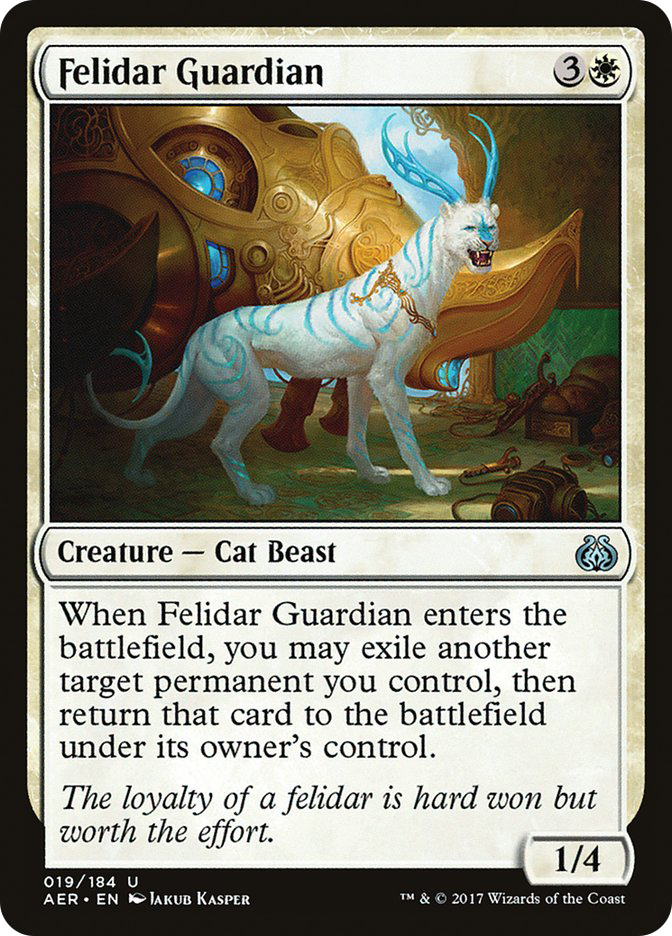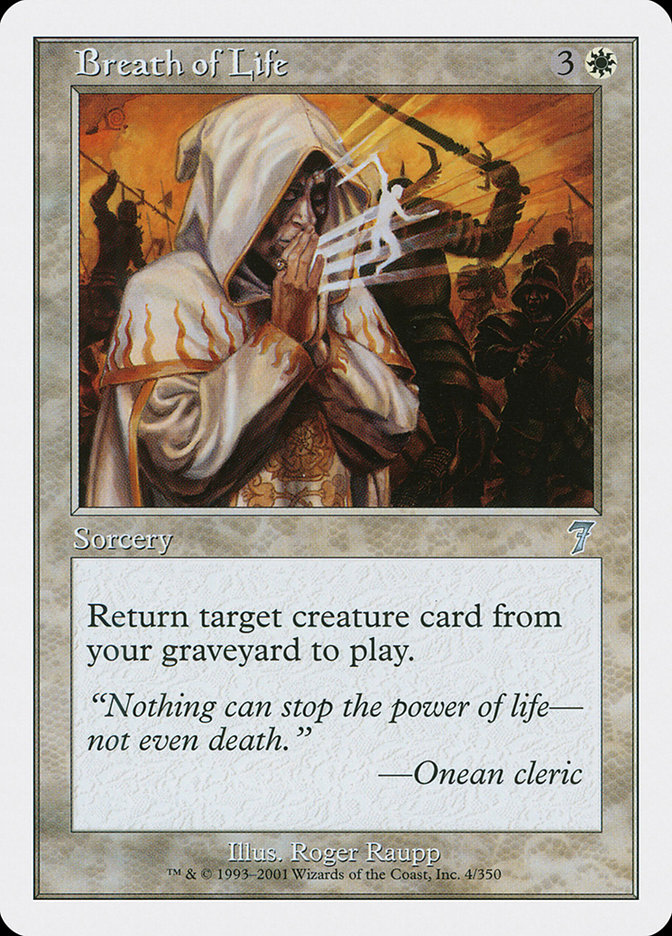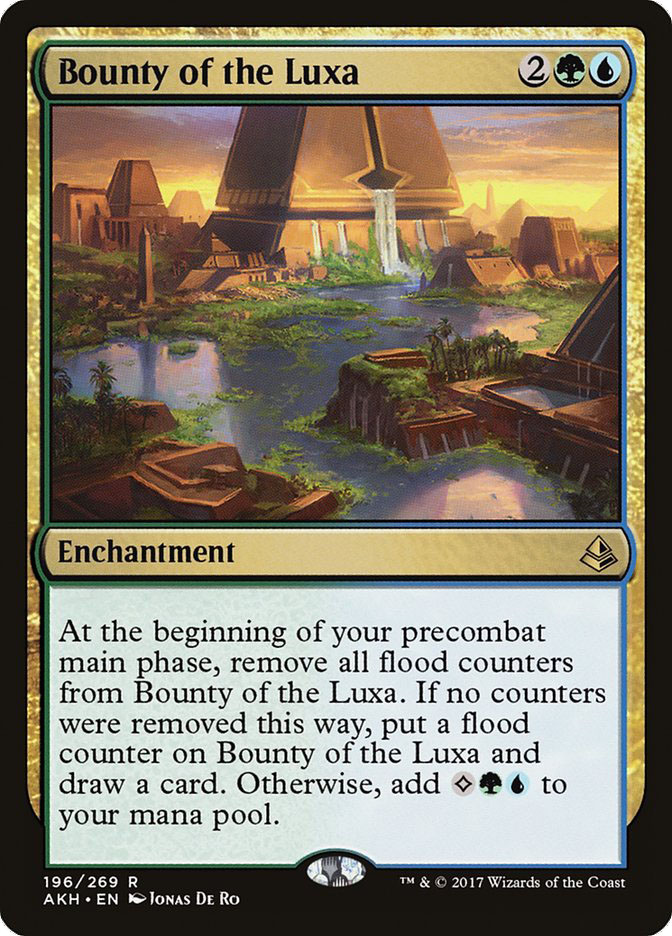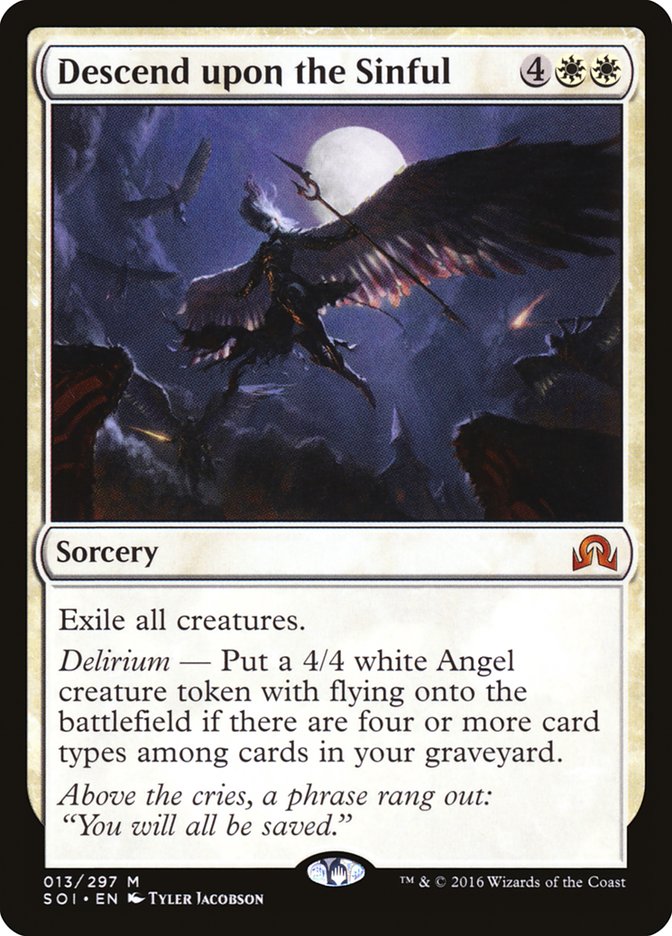
I can remember back to the first week when Kaladesh was legal
where we watched Chris VanMeter win the Open in Indianapolis with R/W
Vehicles. I was thinking to myself, “Does Smuggler’s Copter need to be
banned?” Back then it seemed like a far and away dream that they would ban
any card in Standard again, and I resigned myself to figuring ways to beat
the super efficient 3/3 vehicle. I started down the path of Delirium and I
found Grim Flayer and Ishkanah, Grafwidow, which eventually lead me to the
mother of all Delirium decks. The MVP? Emrakul, the Promised End. Unlike
her name, Emrakul, the Promised End was in fact the beginning of a
terrifying tidal wave that’s only just come to rest this past week.
In what seemed like a blink of an eye the masses were turned on their heels
and the entire Magic community’s focus was on the fact that there was now
cards on the banned list for Standard.
“It’s a different story every time.” -Patrick Sullivan
At the Players’ Championship this past year, Patrick Sullivan repeated that
phrase every time an Emrakul, the Promised End was cast, devastating the
opponent’s position and hand. The sarcasm was not lost on any of us that
weekend. Aetherworks Marvel decks plagued the Invitational and the Players’
Championship to the point where shortly after that event we were trapped in
one of the dullest winters for Magic in history. Some went as far as to
create formats where we hoped to remedy the issues that Standard posed
while not having some of the inherent flaws that Modern had since its
inception. While that neither offered a long-term solution nor change the
fact that we had a ban-worthy problem on our hands, it was a message,
however subtle, to Wizards of the Coast that their poster child format
needed saving.
The first Standard banning since cards of such degeneracy as Stoneforge
Mystic and Jace, the Mind Sculptor had sought to alleviate the stranglehold
some of the prominent strategies of the format and create diversity. While
they did accomplish that for the most part, there was one card that slipped
through the cracks.
This was a mistake. No one in design or development caught Felidar
Guardian’s interaction with Saheeli Rai, and this took the entire format
and turned it upside down. While I personally did manage to win the first
Open of this card’s legality in Columbus with a deck that did not feature
the combo, we soon realized the dark shadow that was cast over everything
everyone else was trying to do.
That’s the problem with combo decks. When a deck like Splinter Twin or
Birthing Pod is first discovered, the versions that are initially designed
have some work to be done to perfect them. Given a few weeks under the
harsh scrutiny of Magic Online, the best players figure the optimal ways to
build the most powerful decks.
The Felidar Guardian combo deck was no
exception to this, and the number of these decks overwhelmed subsequent
tournaments, including Grand Prix. While it is true in that there will
always be a “Best Deck”, it shouldn’t be by that wide of a margin.
Magic is always surprising us in almost every way and the hideous end to
Felidar Guardian was one of the most mind boggling announcements in Magic’s
history. When Wizards announced no bannings on April 24th, there was a
communal uproar. When two days later they announced they changed their
minds and Felidar Guardian was now banned, there was deafening silence.
Most of the vocal players, myself included, were shocked by this turn of
events.
Make no mistake, the banning of Felidar Guardian was one of the most
dangerous and terrifying things I’ve ever experienced as a Magic player.
This ban set a truly disturbing precedent for Magic and one I hope never to
be implemented again.
From this point I, like many others, believed that we would have a new and
healthy format on our hands. We no longer had the threat of losing the game
on turn 4 to arbitrarily large numbers of kitty cats! While the SCG Open in
Atlanta just after the release of Amonkhet proved that being
aggressive in a new format with little time to prepare is almost always
correct, the Pro Tour told an entirely different story just weeks later. I
may have had delusions of grandeur that Delirium would once again be able
to hold back all of what Mardu Vehicles and the rest of the format had to
throw at me, but I was wrong.
It can be very difficult to see what kinds of rippling effects certain
cards have on a format, and Felidar Guardian was a tough one. With the
former Aetherworks Marvel decks utilizing a semi Delirium shell to
facilitate the cost reduction of Emrakul, the Promised End, we had no time
in between when that deck was dominant and when Felidar Guardian was the
default energy-based deck of the format. Because of the lack of time
separating these beasts of the format’s dominance, when Felidar Guardian
was removed the true terror of Ulamog, the Ceaseless Hunger had not yet
been realized.
I’ve heard the logic that Aetherworks Marvel wasn’t the issue and that
Ulamog, the Ceaseless Hunger was, since that’s the singular threat the game
typically hinges on. While I hear those people and understand that logic,
it’s fundamentally flawed in the fact that Aetherworks Marvel will be legal
for over another year. The threat of any high costed spell that gets
printed assimilating itself into the energy themed deck and having its
casting cost cheated on is far too restrictive and perhaps irreparably
dangerous to what is coming down the pipeline for Magic.
Long have we had a Standard format with cards slightly too powerful by
comparison to what existed around them. It is my firm belief that we may
finally be at the point where Standard Magic looks, feels, and plays like
actual games of Magic! We’ve been tried and we have come through stronger
and hopefully more experienced than ever before. While we can’t change the
past, it seems that Wizards has recognized the flaws in its previous
methods of development and has put in place new safety nets to prevent a
banning from ever occurring again in Standard. I have faith that they’ll
come through in that regard, and once we rid ourselves of any painful
memories from these bannings, we’ll never have to experience that again.
Welcome to the new Standard everyone!


While I’m certainly flattered by the immediate responses from two great
players, there’s a ton of unexplored areas in the format that we now have
the opportunity to discover! While my attention will first be devoted to my
personal favorites, Grim Flayer and friends, there are endless other
strategies that have been pushed slightly out of the tier one tournament
scene because of the previous oppressions.
If there are any cards that I expect to see a lot more play come the
Invitational, it’s Glorybringer and Bounty of the Luxa. Glorybringer was
the most hyped card coming out of Amonkhet and the scenario where
it’s the dominant force that we all expected it to be is finally here! With
Grim Flayer, Tireless Tracker, and Gideon, Ally of Zendikar expected to
have their day in the sun, there’s no greater counter than Glorybringer.
Where the metagame will eventually settle I’m not sure, but here’s a great
starting point to where Glorybringer could fit.
Creatures (23)
- 2 Tireless Tracker
- 1 Elder Deep-Fiend
- 4 Bristling Hydra
- 3 Whirler Virtuoso
- 4 Servant of the Conduit
- 4 Rogue Refiner
- 4 Glorybringer
- 1 Channeler Initiate
Planeswalkers (2)
Lands (22)
Spells (13)

With this deck being largely a port over from the shell that was built with
Aetherworks Marvel, Glorybringer is the ultimate threat for most of the
midrange strategies utilizing energy. Many of the old stalwarts will still
exist with fewer sideboard restrictions on them. Temur Energy shells have
been good since the release of Rogue Refiner and will continue to be a deck
for the remainder of their legality. Something that is a bit more new to
Standard is the return of ramp!
Creatures (16)
- 4 Ulamog, the Ceaseless Hunger
- 2 Ulvenwald Hydra
- 4 Ulvenwald Captive
- 2 Servant of the Conduit
- 4 Rogue Refiner
Planeswalkers (5)
Lands (23)
Spells (16)

While this isn’t exactly all too different from the Aetherworks Marvel
decks we’ve come to hate, it is an easy alternative to those who’ve lost
their pet deck. Bounty of the Luxa can often be a better than Aetherworks
Marvel ever could be depending on the situation. If the plan is to cast
Ulamog, the Ceaseless Hunger and make sure that on the way you don’t run
out of gas, Bounty of the Luxa is the perfect card.
Adapting the role that Aetherworks Marvel had on the format, Bounty of the
Luxa facilitating the ramp role to power out Ulamog, the Ceaseless Hunger
the “fair” way seems like it could be well-poised for an unexpected
metagame.
One last deck I want to revisit is a favorite from the previous format that
had a zero percent win rate against Aetherworks Marvel. It might have some
legs now!
Creatures (3)
Planeswalkers (8)
Lands (26)
Spells (23)

Clearly any deck that tries to win the game by grinding people out with
Planeswalkers would have an issue with Ulamog, the Ceaseless Hunger, and
this deck was no exception. We find ourselves playing what typically
amounts to a pre-boarded version of Mardu Vehicles with some ways to go
even bigger post-sideboard.
It might finally be time for the Angels to decend upon us! The main reason
to have Descend Upon the Sinful over a card like Fumigate is the presence
of Zombies. You’re a control deck and do have to deal with everything that
your opponent could conceivably throw at you, and dealing with recursion is
very high on the lists of things that could give you fits.
Overall I’m excited to see where decks like these could go. While Ulamog,
the Ceaseless Hunger is still a legal Magic card, its reign over Standard
has indeed passed and we’re better for it. I hope it’s years before we have
to ban a card in Standard, and I have faith that we’ll come through this
era of Magic and be able to reflect on the past and laugh. The Invitational
is only a few weeks away, and you can be sure, with a new chapter in
Standard having been turned, I’ll be doing my best to be at the forefront
of it and stay one step ahead.










